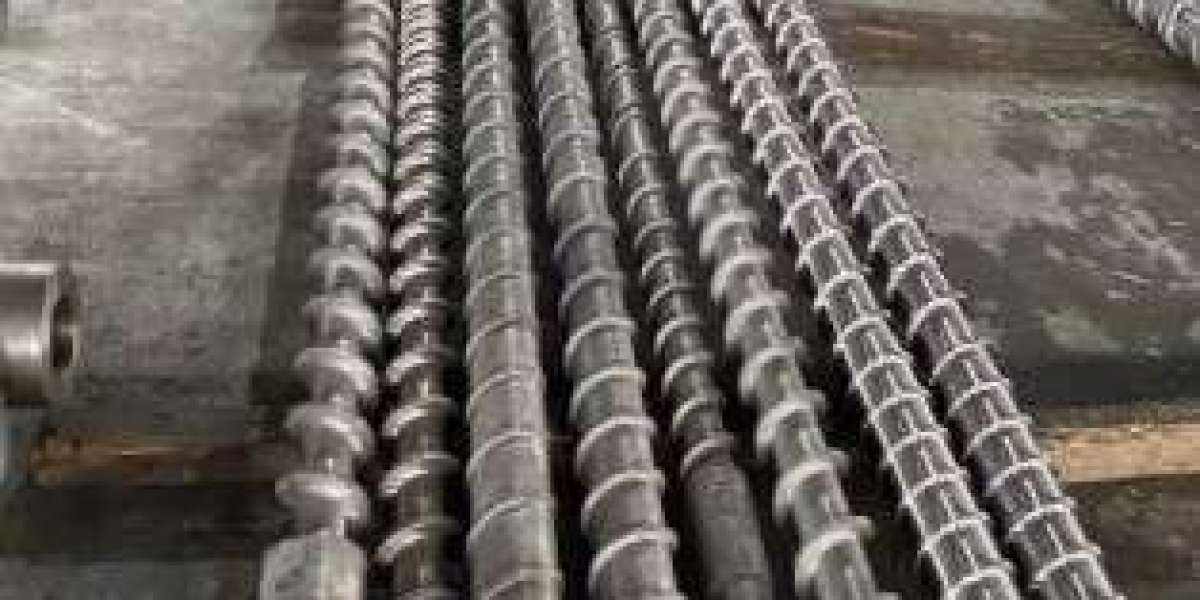The Science Behind Screw Geometry: How Design Impacts Plasticizing Efficiency
Whether it's injection molding or extrusion, one factor has a profound impact on efficiency, quality, and output: screw geometry. The design of the screw and barrel within a plasticizing unit is more than a mechanical detail—it's the core of the plasticizing process.
Understanding the science behind screw geometry provides deep insights into how polymers are melted, mixed, and conveyed. The interaction between the screw and barrel determines not only how efficiently plastic is processed but also the quality of the final product.
In this article, we’ll explore how different aspects of screw geometry—such as length-to-diameter ratio, flight design, compression ratio, and more—influence plasticizing efficiency. Whether you're an engineer, technician, or operations manager, knowing the importance of screw design can drastically improve your processing capabilities.
What Is Plasticizing Efficiency?
Before we delve into geometry, let’s briefly define plasticizing efficiency. This term refers to how effectively a plasticizing unit can convert solid polymer pellets into a homogeneous, molten state ready for shaping. High plasticizing efficiency means:
Faster melting of plastic
Better mixing of additives and colorants
Reduced energy consumption
Less material degradation
Consistent output quality
The screw and barrel play a pivotal role in achieving these results, especially when dealing with high-performance or specialty polymers.
Anatomy of the Screw and Barrel
The screw and barrel form the core of the plasticizing system. The screw is housed within the heated barrel, and as it rotates, it conveys, melts, and mixes the plastic.
The Screw: Key Components
A typical screw has three main zones:
Feed Zone: Solid polymer is introduced and begins to be conveyed forward.
Transition Zone (also called the compression or melting zone): The material melts due to a combination of shear heat and barrel heating.
Metering Zone: The now-molten plastic is homogenized and pressurized before injection or extrusion.
Each of these zones has a specific geometry designed to optimize the processing of a particular polymer type or application.
How Screw Geometry Affects Plasticizing Efficiency
1. Length-to-Diameter Ratio (L/D)
The L/D ratio is the screw length divided by its diameter. A common range is 20:1 to 30:1, though specialized screws may go up to 40:1.
Higher L/D ratios allow for more residence time and better mixing. This is ideal for processes that require degassing, venting, or additional heating.
Lower L/D ratios are suited for heat-sensitive materials or processes where short residence time is critical.
Impact on efficiency: A longer screw provides more opportunities for melting and mixing, improving efficiency—but only if the material can tolerate the longer exposure to heat and shear.
2. Compression Ratio
This is the ratio of the depth of the feed zone flight to the metering zone flight. Typical compression ratios range from 1.5:1 to 3.5:1.
High compression ratios provide greater pressure buildup and better mixing, but can degrade heat-sensitive materials.
Low compression ratios are gentler on polymers, minimizing degradation but potentially leading to poor homogenization.
Impact on efficiency: A balanced compression ratio is essential for melting the polymer fully without degrading it, which directly affects output quality and screw longevity.
3. Flight Depth and Width
The flights are the helical ridges on the screw that move the material forward. Their geometry influences:
Shear rate
Melt uniformity
Material throughput
Deeper flights in the feed zone accommodate more solid resin. Shallower flights in the metering zone help build pressure and homogenize the melt.
Impact on efficiency: Precision in flight design ensures consistent melting and reduces energy waste due to friction or poor heat transfer.
4. Pitch of the Screw
Pitch refers to the distance between each thread or flight. It affects how quickly the material is conveyed.
Large pitch = faster conveyance but potentially lower pressure
Small pitch = slower movement, more pressure buildup
Impact on efficiency: The right pitch ensures optimal residence time for thorough melting without compromising throughput.
5. Barrier Screws and Mixing Sections
Modern screws often include barrier sections and mixing elements to improve homogenization.
Barrier screws separate the solid and molten portions of polymer, improving melt quality.
Mixing sections like Maddock or pineapple mixers increase shear for better dispersion of additives or colorants.
Impact on efficiency: These designs greatly enhance melt uniformity, color mixing, and overall product quality with minimal energy input.
The Role of the Barrel in Efficiency
While the screw gets most of the attention, the barrel also plays a critical role. It houses the screw and provides controlled heating via electric heaters or thermal oil. The screw and barrel must be precisely matched for optimal processing.
Key Barrel Features That Influence Plasticizing:
Heating zones: These allow gradual melting, preventing material degradation.
Venting ports: In vented barrels, gases and volatiles can be removed to enhance part quality.
Bimetallic linings: Protect against wear and corrosion, extending service life and maintaining efficiency.
Impact on efficiency: A well-maintained, appropriately heated barrel ensures consistent heat distribution and complements the screw’s mechanical action.
Material-Specific Screw and Barrel Designs
Different polymers have unique characteristics that require tailored screw and barrel configurations:
Polymer Type | Recommended Features |
HDPE, LDPE | Low compression screw, smooth barrel |
Nylon, ABS | Barrier screw, vented barrel |
PVC | Twin-screw or special low-shear single screw |
Glass-filled materials | Abrasion-resistant screw and barrel, deep feed flights |
Matching the screw and barrel to the specific polymer being processed ensures high plasticizing efficiency and minimal waste or downtime.
How Poor Screw Design Leads to Inefficiency
Improper screw geometry can lead to several issues:
Inconsistent melt quality
Unmelted granules in the product
Material degradation due to overheating
Excessive energy consumption
Increased wear and maintenance costs
Investing in the correct screw and barrel design may have a higher upfront cost, but the long-term savings in energy, material waste, and maintenance are significant.
Upgrading Screw Design for Better Performance
If you're facing ongoing issues with throughput or melt quality, consider a custom-designed screw. Many manufacturers offer:
Process audits
Screw design optimization
Retrofitting solutions
Advanced computational modeling and simulation tools can now predict how changes in screw geometry will affect plasticizing efficiency, taking the guesswork out of upgrades.
Conclusion: Optimizing Screw Geometry Is Key to Efficient Plasticizing
The geometry of the screw and barrel isn’t just a mechanical consideration—it’s a scientific balancing act that determines how effectively your polymer is processed. From L/D ratios to compression and flight design, every aspect plays a role in plasticizing efficiency.
A well-designed screw can lead to:
Faster cycle times
Better part quality
Lower energy costs
Longer equipment life
As polymer technology evolves and demands for higher performance increase, understanding and optimizing screw geometry is no longer optional—it's essential.














